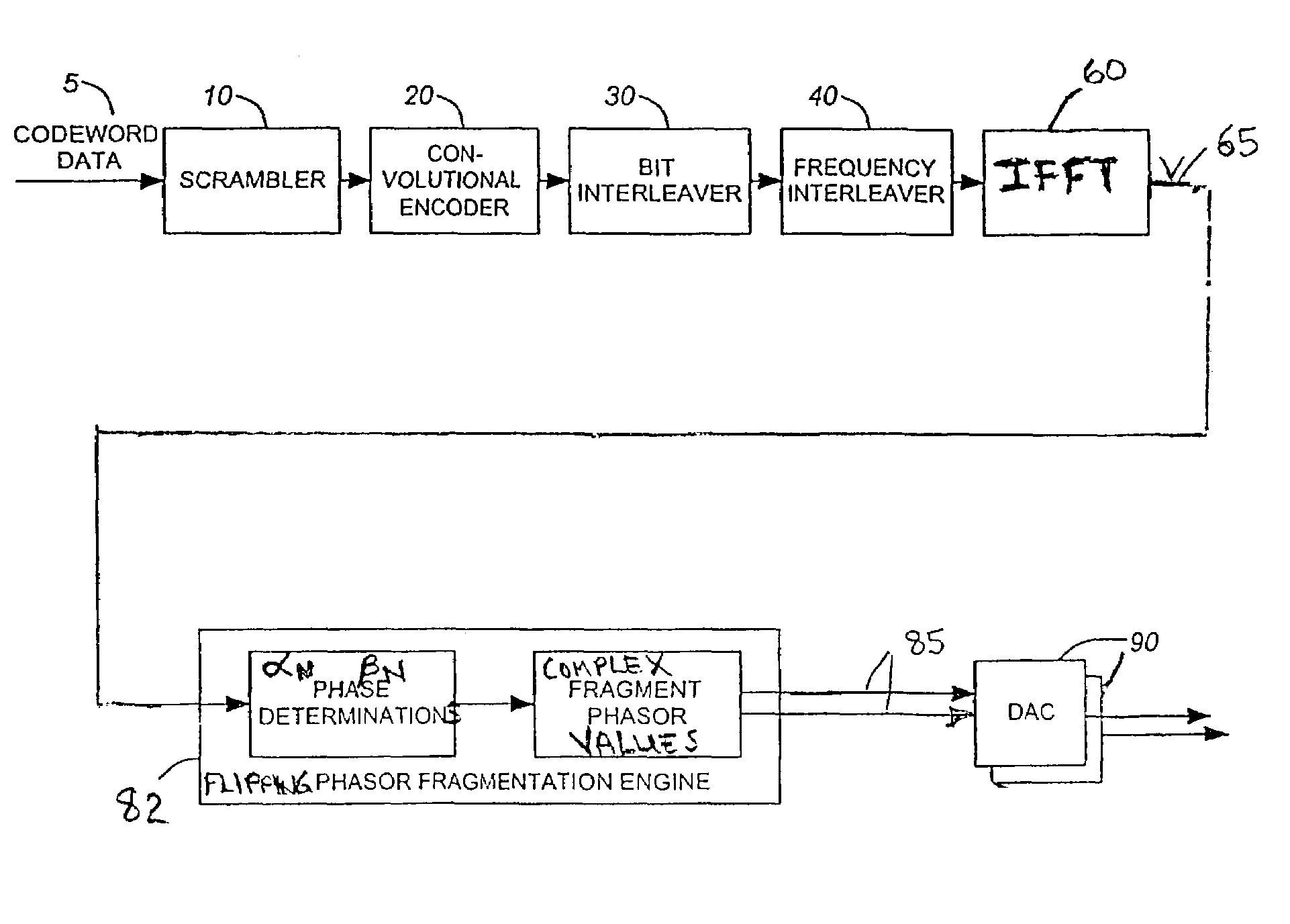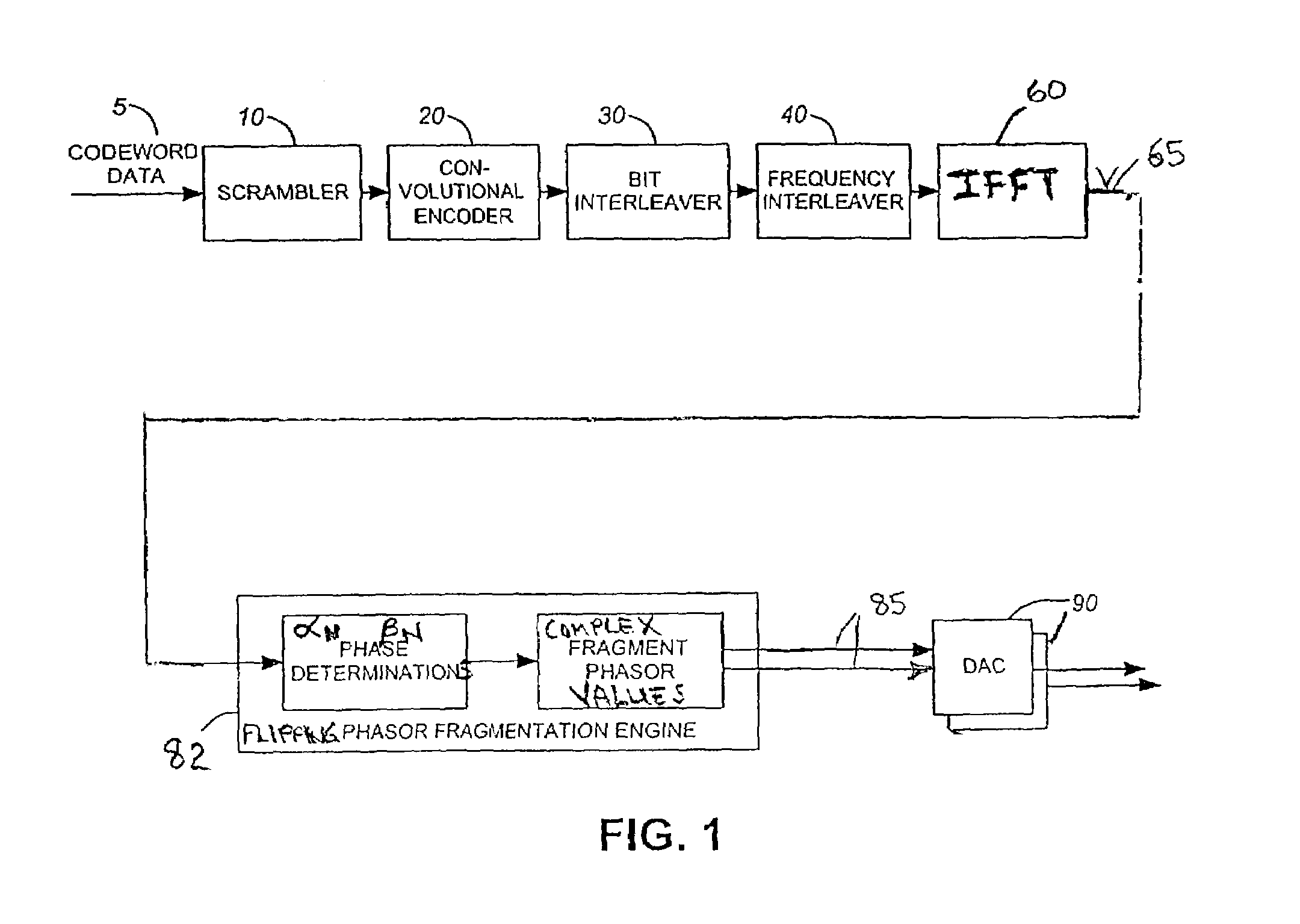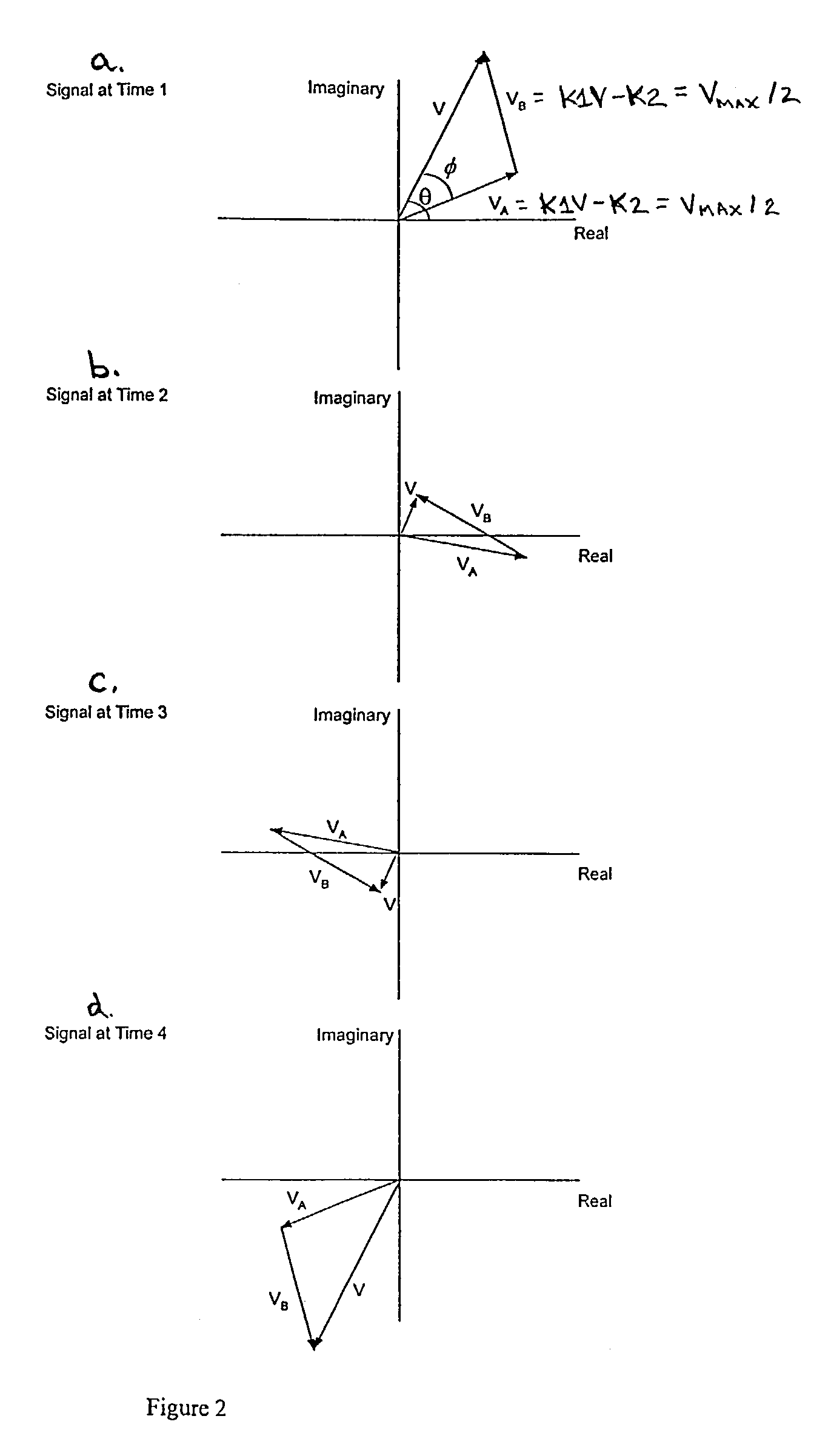Phasor fragmentation circuitry and method for processing modulated signals having non-constant envelopes
a phasor fragmentation circuit and modulation signal technology, applied in the field of computational circuits and methods, can solve the problems of high peak-to-average power ratio that may occur, large power back-off (e.g. 12 db) for power amplifiers, and high dc power consumption of transmitters
- Summary
- Abstract
- Description
- Claims
- Application Information
AI Technical Summary
Benefits of technology
Problems solved by technology
Method used
Image
Examples
Embodiment Construction
[0019]As described in the aforesaid co-pending U.S. continuation-in-part application Ser. No. 10 / 205,743, a phasor fragmentation engine for a wireless or wireline transmitter was previously developed by the assignee whereby a complementary computational phasor fragmentation algorithm is applied to a modulated signal such as OFDM or QAM. In essence, the phasor fragmentation engine deconstructs a predetermined modulation waveform into signal components, referred to herein as fragment phasors (signals), which are of equal magnitude. Accordingly, these fragment signals individually have lower peak-to-average power ratios than the modulation signal. Advantageously, multiple identical analog circuits, having low dynamic ranges and small power back-offs, may then be used to further process the fragment signals (specifically, Class D or F power amplifiers and, for wireless applications, low compression-point up-converters).
[0020]Following analog circuit processing the fragment signals are r...
PUM
 Login to View More
Login to View More Abstract
Description
Claims
Application Information
 Login to View More
Login to View More - R&D
- Intellectual Property
- Life Sciences
- Materials
- Tech Scout
- Unparalleled Data Quality
- Higher Quality Content
- 60% Fewer Hallucinations
Browse by: Latest US Patents, China's latest patents, Technical Efficacy Thesaurus, Application Domain, Technology Topic, Popular Technical Reports.
© 2025 PatSnap. All rights reserved.Legal|Privacy policy|Modern Slavery Act Transparency Statement|Sitemap|About US| Contact US: help@patsnap.com



